2022 Toyota Corolla Cross First Drive Review: Toyota's Oldest Model Crosses Over
FAST FACTS
| Engine: | 2.0L I4 |
| Output: | 169 hp, 150 lb-ft |
| Transmission: | CVT, AWD or FWD |
| US fuel economy (MPG): | 31/33/32 (FWD), 29/32/30 (FWD) |
| CAN fuel economy (L/100KM): | 7.6 / 7.1/ 7.4 (FWD) 8.1/7.4/7.8 (FWD) |
| Starting Price (USD): | $23,410 (inc. dest.) |
| Starting Price (CAD): | TBA |
Fifty million.
That’s how many Corollas have rolla’d over the surface of planet Earth, triple the number of Model Ts and double the number of Beetles. Sounds like a lot, but it’s to be expected when a vast institution like Toyota sells a hit product over the span of seven decades. But even though Toyota has built enough of these cars for every man, woman and child in Colombia (or two for every Australian) the writing is on the wall for sedans and coupes. So it’s time for the Corolla to get the big-and-tall treatment and wade into the fight with about 20 other models in the entry-level crossover segment.
Get a Quote on a New Toyota Corolla CrossHello, Toyota Corolla Cross.
Something Special for the Millennials?
If Toyotas look a bit…bland…to you (and me), that’s no accident. Toyotas, maybe to a fault, want to be all things to all people. And when I say all people, I mean like everyone in the world. Toyota designed the Cross for global markets like Thailand and Colombia, first introducing it in 2020.
I guess Toyota’s product planners decided it would do well in the North American market, but Toyota’s Samantha Goot presented it to journalists in Austin, Texas as if it were specially made for “smart, sophisticated, tech-savvy and down-to-earth” Millennial buyers, slotting into the Toyota crossover lineup between the basically-a-car C-HR and the more grown-up RAV4.
The Cross is 5.3 inches(135 mm) shorter than the RAV4, but three inches (76 mm) longer than the C-HR. It also has eight inches of ground clearance, 2.2 inches (56 mm) more than the C-HR and just .3 inches (8 mm) less than the RAV4. In fact, park it next to a RAV4 and you’ll have a hard time telling them apart.
But whatever. Toyota’s design team tried hard to give the Cross some personality, with unique “Corolla Cross” badges on the C-pillars and special Corolla logos scattered in 20 places around the vehicle like Easter eggs. Cute, but will it be enough to give the car the “little bit of an urban edge” that Ms. Goot promised? Toyotas are a lot of things, but rarely edgy.
Ride and Comfort
I’ve spent some time in Corollas. Not only did I rent them as an Uber driver, but a red-brown ’75 coupe I bought from my sister for $500 was my first car. So I expect the Corolla to provide value, reliability, and just enough creature comforts to make sure you want to get back in. The Cross…well, it’s something different. In a good way.
SEE ALSO: Toyota Corolla vs Hyundai Elantra ComparisonEven in the lowest-trim L, the Cross coddles you, and it gets better the more time you spend. The fabrics and plastics feel nice to the touch, though some of the door and dash material is harder and cheaper feeling than I’d like. The LE adds power-adjustable heated seats and a well-engineered lumbar support (it’d be nice if it adjusted up and down as well as in and out, though) and the LXE trims the seats with leather-like “Sof-Tex” material that reminded me of Tesla’s upholstery.
Interior room—for passengers and cargo—is just fine, especially for this class.
Don’t expect it to be too spacious, but it’s impressive how comfortable and roomy it felt to 5’6” me (as well as adult-sized adults), with 39 inches (991 mm) of headroom (but a paltry 32 inches or 813 mm of rear-passenger legroom). You can get 26.5 cu-ft. (750 liters) of stuff behind the second-row seats, a bit less for the AWD—fold them down and that jumps to 66.8 cu-ft. (1,890 liters) or 510 gallons. If you have more stuff and want to tow it in a trailer, tow capacity is 1,500 pounds.
Ride quality was impressive for this price point. It gave a smooth ride and thanks to a not-bad eight inches of ground clearance, gobbled up the uneven pavement in an admirable way (“slow down for speed bumps? Not me! FREEDOM!”) without feeling harsh or wallow-y. A minor exception was the torsion-beam rear suspension on the FWD versions; it just didn’t feel as planted or controlled as the AWD. Not bad. Just noticeably different, and rest assured the Cross has a smooth and car-like ride familiar to any Toyota owner, and it did a good job muffling road and wind noise, even at freeway speeds.
I had fun driving the car. It’s not as nimble or planted as a Corolla sedan, but not by much. I bombed some cloverleaf turns at full-tilt boogie in an attempt to scare the other journalist riding along with me, but no dice: the tires didn’t squeal or slip, even with the TC turned off. The motor just doesn’t have the oomph to get you into trouble, so I felt confident and in control the whole time, which I hear most people prefer.
Amenities and Technology
If you read our 2021 Corolla L review, you’ll be up to speed on the basic amenities and technology in the base (L)-model Cross. And it’s a nice mix of stuff, from the wired Android Auto/Apple Carplay to the alphabet soup of Toyota Safety Sense 2.0, which includes pedestrian detection, lane-assisted and dynamic cruise control and even road sign assist. The L’s climate control is manual—you have to turn knobs like an animal—but includes the HVAC ducting to the back seats to keep your passengers happy.
Shell out for the LE and XLE and you start getting the fancy stuff. For safety, the LE adds blind-spot and rear cross-traffic monitoring, while the XLE gets parking assist and automatic/assisted braking. The LE and XLE also get a smart key as well as an inch-larger entertainment screen (eight inches). The L and LE use a 4.2-inch mixed analog/digital driver info display, while the XLE gets a clear, colorful 7-inch display. In true Toyota fashion, the tech was simple enough for journalists to figure out (even the guy from Reader’s Digest), with clear, intuitive controls and menus.
Engine and Powertrain
Here’s the good part. I’m used to watching the price of cars—heck, everything—shooting up in price, and though $23 gees isn’t cheap, having the zesty lil’ 2.0-liter Dynamic Force four-cylinder VVT-i engine as standard equipment represents a nice slice of value, as that powerplant is only offered in the SE and XSE Corolla sedans that start at $1100 more than the Cross L with FWD. Surprisingly, the SE sedan is only five pounds lighter! I can tell you it’s a good motor—about as smooth and quiet as you can reasonably expect, with flawless fueling. It didn’t feel strained, though it also didn’t feel fast. Like asking Peter Dinklage to grab some top-shelf gin for you at the liquor store, there’s just no point asking it to do what it can’t.
What it can do is impressive enough, though. The CVT is as good as I’ve experienced. It’s very good at getting the most out of an engine that’s tuned more like a sportscar’s with its lopsided horsepower/torque numbers, so getting up to a decent, Texas-freeway cruising speed isn’t too dramatic. Once there, engine noise is muted and vibration was hard to detect.
SEE ALSO: Toyota RAV4 vs Nissan Rogue ComparisonAWD is only an extra $1,300, and I’d like to point out that it was noticeably more planted and fun to drive than the FWD, which seemed lighter and bouncier. The AWD is well worth the extra money and slightly reduced (about two MPG fuel economy or .85 km/l). If you can’t afford it, I’ll have Kshitij loan you the money.
A note: in other markets the Cross is available with a hybrid engine, but not here. When asked, the Toyota people looked a bit sheepish and glanced around at each other before one of them said, “stay tuned next year.”
Verdict: 2021 Corolla Cross
I’m not much of an SUV guy, but I really liked the Cross, especially the LE and XLE with AWD. It’s charming and fun to drive, and drips with Toyota’s quality and thoughtful touches. It’s also surprisingly priced competitively in the segment and has all the tech I like having. Downsides? Well, the highway mpg at 33 (32 for the AWD) is almost 20 percent less than the Corolla sedan’s, making it a tough sell for high-mileage commuters and Uber/Lyft drivers.
I’m also confused as to why this car is being offered. It’s basically a three-percent smaller RAV4, with a less-powerful engine with no hybrid option. For an extra $4,600 (US) buyers could get the extra power and room of the RAV4. And for just a grand more than the Cross XLE AWD, you could get into an AWD hybrid RAV4.
What’s going on?
Thanks to the use of the Toyota New Global Architecture (TNG-A) platforms for most of the cars the manufacturer produces, Toyota can easily offer a dizzying array of models, trims, packages, and options. I’m sure it’s all planned out to maximize profits for dealers and Toyota while making sure there’s an option for everyone, no matter how subtle the differences between models. The Cross is yet another fruit from that tree and a very acceptable one.
I haven’t driven the RAV4, but other AutoGuide writers like its value, ride quality, and roominess. The Cross is more of the same, and Toyota’s new factory in Alabama will pump out 150,000 a year. Toyota loyalists will have yet another choice for a simple, reliable family car. Will they sell another 50 million, despite the seemingly fast-impending demise of the gas-burning car? Ask me in 55 years.
Become an AutoGuide insider. Get the latest from the automotive world first by subscribing to our newsletter here.
LOVE IT
- AWD is a good value
- Pleasant and familiar to drive
- Nice standard and available amenities
LEAVE IT
- Not great rear-seat legroom
- Why not just get the RAV4?
- No hybrid option and highway fuel economy is lacking.
More by Gabriel Ets-Hokin



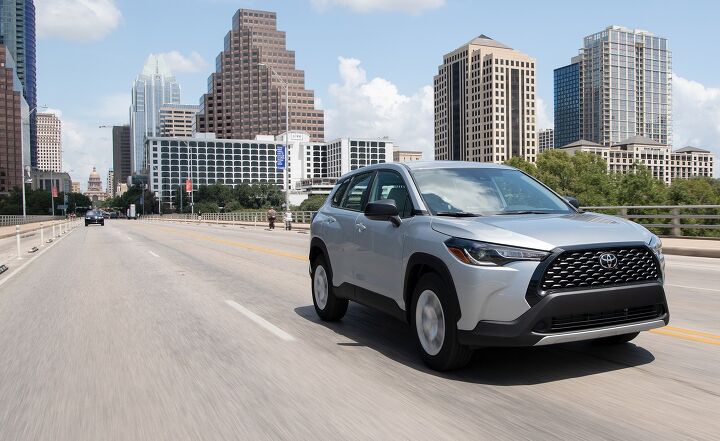


























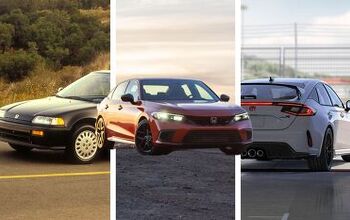
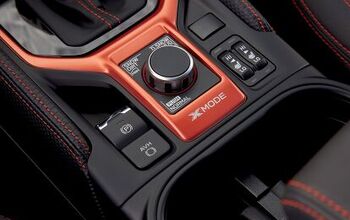

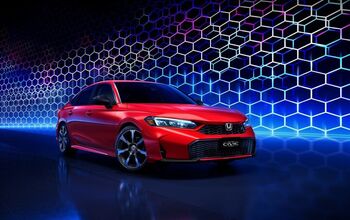
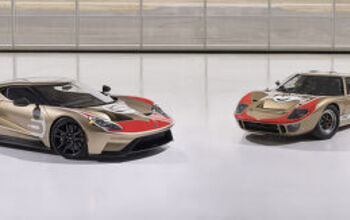

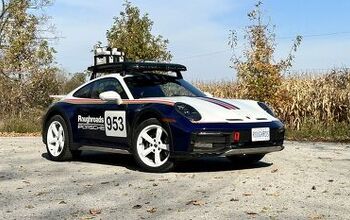
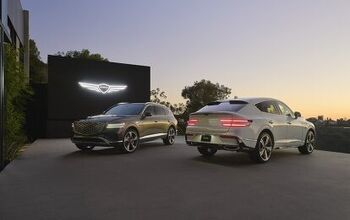

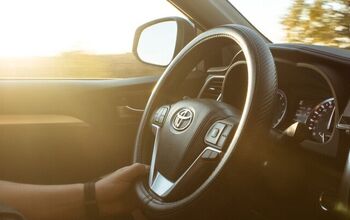
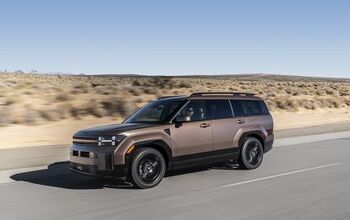

Comments
Join the conversation